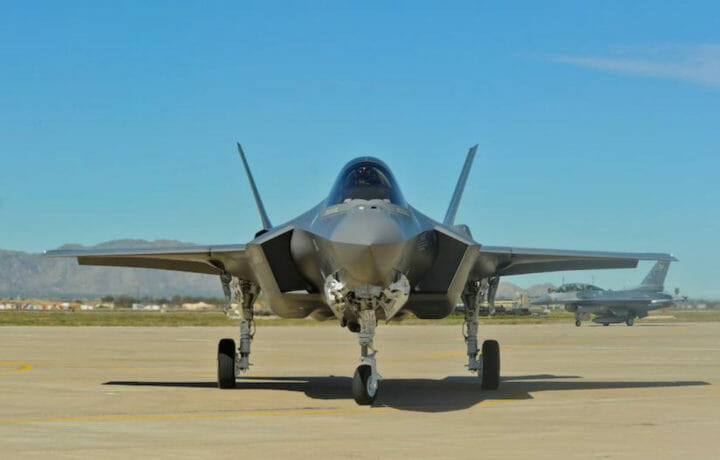Days after a United States Marine Corps F-35B crashed in rural South Carolina, a new report from a government watchdog highlighted the ongoing maintenance delays with the fifth-generation aircraft. The Government Accountability Office (GAO) warned that due to a lack of space parts and issues with technical data, as well as inadequate training of maintainers, the F-35 Joint Strike Fighter is only “mission capable” 55% of the time – below the 70% mission-capable goal that the United States Air Force has for its F-35As, and the 74% goal for the U.S. Navy’s and U.S. Marine Corps’ F-35B and C variants.
“In the coming decades, the Department of Defense plans to spend an estimated $1.7 trillion on nearly 2,500 F-35s. Most of the funds will go to operating, maintaining, and repairing the aircraft,” the GAO noted.
It further suggested that the Pentagon will face a number of maintenance issues with the Lightning II, including delays in setting up military service depots, the facilities where the most complex repairs are conducted; inadequate equipment to keep the fleet of F-35s operational; and maintenance and supply delays affecting aircraft readiness.
GAO Recommendations
The government watchdog offered a number of recommendations that should be made to address the issues with the F-35 Joint Strike Fighter Program.
It called upon Secretary of Defense Lloyd Austin to ensure that the Under Secretary of Defense for Acquisition and Sustainment, in consultation with the Secretary of the Navy, the Secretary of the Air Force, and the F-35 Joint Program Office (JPO), reassesses the approach for the F-35’s information technology systems continuous support sustainment element. This includes whether the aircraft’s maker Lockheed Martin or the government should assume responsibility.
It also called for the reassessment of any changes, if any, the United States Navy and Air Force should make to the leadership, responsibility, and oversight of specific sustainment activities; and what intellectual property the services may require to support any changes, including all critical technical data needs, their associated costs, and milestones to acquire the data. The Navy and Air Force should also evaluate any resources needed to implement any changes.
New Approach to Maintenance and Sustainment
The GAO further suggested the Pentagon along with the F-35 JPO the approach for the F-35’s maintenance planning and management sustainment element, to determine whether the government or contractor should assume primary responsibility of the element for the services, and what changes, if any, the Navy and Air Force should make to the leadership, responsibility, and oversight of specific sustainment activities.
The GAO also called upon the Pentagon to determine what intellectual property will be require to support any changes, including all critical technical data needs, their associated costs, and milestones to acquire the data, as well as any resources needed to implement any changes.
To support the sustainment element, GAO called for it to be determined whether the government or contractor should assume primary responsibility of the element for the Navy and Air Force, along with what changes, if any, should be made to the leadership, responsibility, and oversight of specific sustainment activities. The watchdog called for similar measures to be taken for training/training sustainment elements.
The U.S. Fleet of F-35s
The F-35 Joint Strike Fighter is operated by the United States Air Force, United States Navy, and United States Marine Corps. The three services combined have more than 450 F-35s in service – and the DoD eventually plans to have a fleet of almost 2,500 of the fifth-generation fighters with a lifecycle cost of more than $1.7 trillion.
However, the vast majority of the costs come from the operation and sustainment of the stealth aircraft, which is currently expected to remain in service until the 2070s. The Pentagon is scheduled to take over management of the F-35 maintenance by late 2027.
In a statement following the release of the GAO report, Lockheed Martin said, “We stand ready to partner with the government as plans are created for the future of F-35 sustainment ensuring mission readiness and enabling deterrence.”
GAO reviewed F-35 program documentation, reviewed readiness and performance data, visited two F-35 depots and three operational installations, conducted a survey of all 15 F-35 installations, and interviewed officials.




